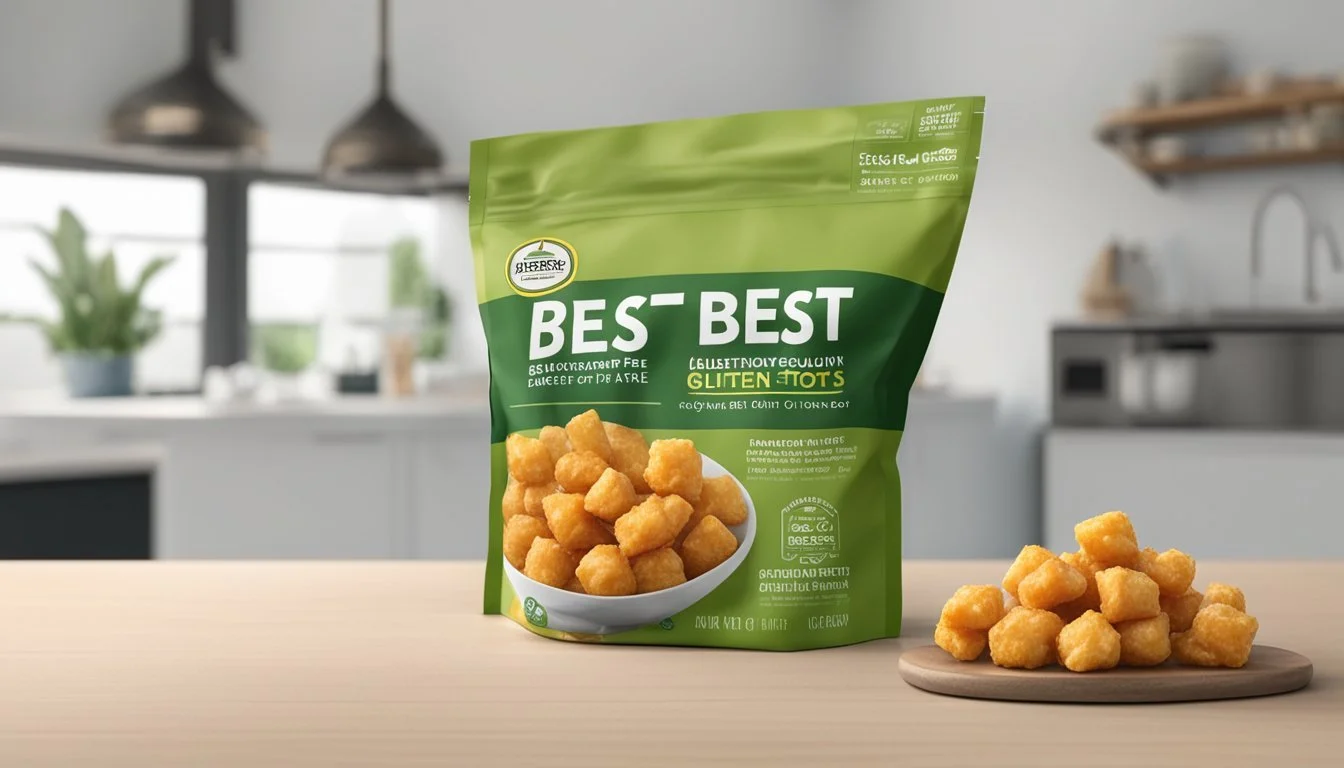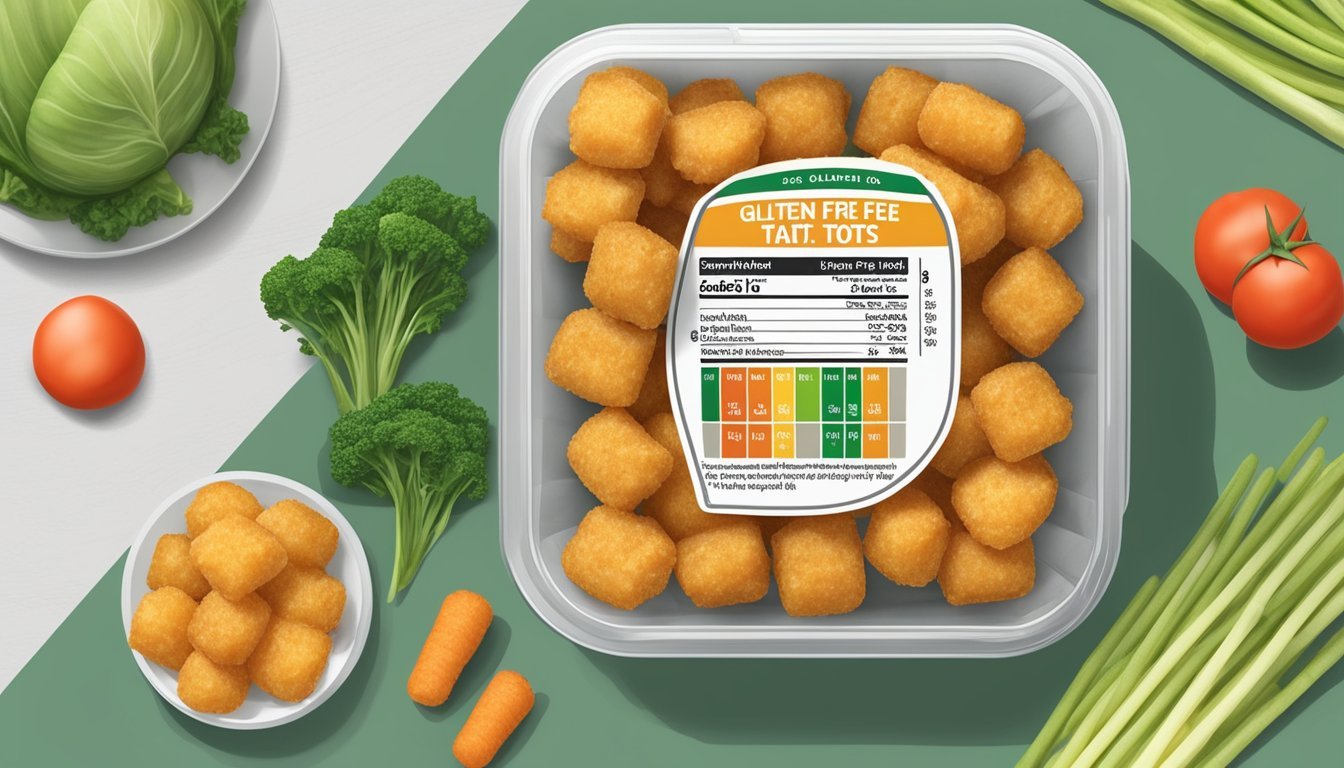How Long Do Gluten-Free Tater Tots Last?
Storage Tips and Shelf Life
Gluten-free tater tots have become a popular choice for those who follow a gluten-free lifestyle due to celiac disease or gluten intolerance. These tasty snacks and side dishes are often stored in the freezer, where they can last for quite a while. In general, gluten-free tater tots last for about 6 to 12 months in the freezer, ensuring a long shelf life while maintaining their delicious, crispy texture.
When considering the longevity of gluten-free tater tots, it's important to check the packaging for any specific storage recommendations. Proper storage can significantly extend their shelf life and keep them safe to eat. Keeping the tater tots in an airtight container or freezer bag helps prevent freezer burn and ensures they remain fresh.
Curious about maximizing the lifespan of your gluten-free tater tots? Understanding the best practices for storage and recognizing signs of spoilage can help. This way, you can always have a quick and safe snack or side dish ready when you need it.
Understanding Gluten-Free Foods
Gluten is a protein found in wheat, barley, and rye. It can cause health issues for those with celiac disease or gluten intolerance.
Celiac disease is an autoimmune disorder where ingesting gluten damages the small intestine, leading to various health problems. Therefore, following a gluten-free diet is crucial for individuals with this condition.
Gluten-free foods are those that do not contain wheat, barley, rye, or their derivatives. These foods are essential for people with celiac disease or gluten intolerance.
Reading gluten-free labels is important for determining if a product is safe. Look for terms like "gluten-free," "no gluten," or symbols indicating certification.
Gluten-free standards have been established to ensure the safety of these products. In the United States, foods labeled as gluten-free must contain less than 20 parts per million (ppm) of gluten.
Cross-contamination is a significant concern in gluten-free production. It occurs when gluten-free foods come into contact with gluten-containing products, even in small amounts.
Gluten-free certification from recognized bodies ensures rigorous testing and manufacturing practices to avoid cross-contamination. Brands with certification labels have undergone thorough verification processes.
Gluten-free products span a wide range, from grains like quinoa and rice to fruits, vegetables, and specially made gluten-free versions of popular foods like breads and snacks.
For individuals managing gluten intolerance or celiac disease, understanding gluten-free foods and being diligent about food choices play a crucial role in maintaining their health.
Gluten-Free Tater Tots Explained
Gluten-free tater tots are a popular alternative for those with gluten sensitivities or Celiac disease. This section explores their ingredients and alternatives and highlights several trusted brands and labels.
Ingredients and Alternatives
Gluten-free tater tots primarily consist of grated potatoes. Manufacturers avoid using wheat flour, which is common in regular tater tots as a binder. Instead, they use alternatives like cornstarch or potato starch to achieve the desired texture.
Other ingredients may include seasonings, onion powder, and garlic powder. Some brands might use rice flour to ensure the tots remain gluten-free. It’s crucial to check labels for any potential gluten-containing additives.
For those preferring homemade options, it’s possible to use organic potatoes and binders such as eggs or gluten-free all-purpose flour. This allows for full control over ingredients, catering to specific dietary needs.
Brands and Labels
Several brands cater to the gluten-free market, providing safe and tasty tater tot options. Ore-Ida is a well-known brand that clearly labels its gluten-free products. They offer various products, including Golden Tater Tots and Extra Crispy Tater Tots.
Other brands include Alexia and 365 by Whole Foods Market, both offering certified gluten-free options. **Great Value Tat **from Walmart also provides gluten-free alternatives, ensuring wide availability.
When purchasing, look for labels stating "certified gluten-free" or "organic." This ensures the product meets strict standards, minimizing cross-contamination risks. Always read ingredient lists and confirm the absence of gluten-containing elements for safety.
Preparation and Cooking Techniques
Preparation and cooking methods are crucial for achieving crispy, golden brown gluten-free tater tots. These techniques vary when making homemade tater tots versus cooking store-bought ones, each requiring specific steps and attention to detail.
Making Homemade Tater Tots
For homemade tater tots, start with peeling and cutting potatoes into 1 1/2-2 inch pieces. Boil until fork-tender, then drain and return them to the pot. Mash the potatoes and mix with desired seasonings and gluten-free ingredients, shaping them into small tots.
To cook, place the tots on a baking sheet lined with parchment paper. Bake at 400°F (200°C) for 20-25 minutes, flipping midway to ensure even browning. Alternatively, use an air fryer: preheat to 400°F (200°C) and cook for 10-15 minutes, tossing every 5 minutes. The tots should be golden brown and crispy.
Cooking Store-Bought Tater Tots
For frozen tater tots, start by preheating the oven to the temperature specified on the package, typically around 425°F (220°C). Spread the tots on a baking sheet in a single layer. Bake for about 20-25 minutes, flipping once halfway through.
Using an air fryer? Preheat to 400°F (200°C) and arrange the tots in a single layer. Cook for 10-15 minutes, shaking the basket every 5 minutes to ensure even cooking. If you prefer frying, preheat the oil in a deep fryer to 350°F (177°C) and fry the tots until golden brown, typically 3-5 minutes, making sure not to overcrowd the basket.
Shelf Life and Storage
Gluten-free tater tots can last between 3 to 5 days in the fridge when stored properly. To ensure they stay fresh and safe to eat, careful attention must be given to proper storage methods and recognizing signs of spoilage.
Proper Storage Techniques
To maximize the shelf life of gluten-free tater tots, they should be wrapped in aluminum foil and placed in an airtight container. This method helps to prevent moisture loss and contamination. If the tater tots are in their original, unopened packaging, simply storing them in an airtight container will suffice.
For frozen tater tots, it is important to keep them at a consistent, low temperature. Always check that the freezer is set to 0°F (-18°C) or lower. Rapid temperature changes can cause freezer burn, affecting the texture and taste of the tater tots.
Identifying Spoilage
Spoiled tater tots may show noticeable changes in texture, smell, and appearance. They can become soft, mushy, or develop an off-putting odor. Look for signs of mold or discoloration.
If there is any uncertainty about their freshness, it's safer to discard them. Consuming spoiled tater tots can lead to foodborne illnesses, so it's crucial to err on the side of caution.
By following these guidelines, you can enjoy gluten-free tater tots while minimizing the risk of spoilage and foodborne illness.
Health and Dietary Considerations
When incorporating gluten-free tater tots into a diet, it is essential to consider their nutritional content and the health impacts of a gluten-free diet. This ensures they align with personal health goals and dietary restrictions.
Caloric and Nutritional Content
Gluten-free tater tots' nutritional profiles can vary by brand. They are typically made from potatoes, which are naturally gluten-free. A standard serving (about 9 pieces or 85 grams) often includes:
Calories: ~160-200 kcal
Total Fat: 8-11 grams
Saturated Fat: 1-2 grams
Carbohydrates: 20-25 grams
Dietary Fiber: 2-3 grams
Sugars: 1 gram or less
Protein: 2-3 grams
These tater tots can fit into various diets such as keto (if eating modified, low-carb versions) and vegan, provided no animal-based ingredients are used. They should, however, be consumed in moderation due to their calorie and fat content.
Gluten-Free Diet and Health Impact
For individuals with celiac disease or gluten sensitivity, gluten-free tater tots are a safe alternative to regular tater tots. Ensuring they are produced in a gluten-free facility minimizes cross-contamination risks.
A gluten-free diet can lead to deficiencies in fiber, vitamins, and minerals if not well-planned. Thus, it is crucial to complement gluten-free tater tots with nutrient-dense foods such as fruits, vegetables, and proteins.
Gluten-free foods can be a vital part of diets for health-related issues and lifestyle choices, but care should be taken to maintain nutritional balance.
Culinary Uses and Serving Suggestions
Gluten-free tater tots are versatile and can be enjoyed in numerous culinary applications. They pair well with many condiments and can be incorporated into diverse meal types.
Pairings and Condiments
Gluten-free tater tots can be paired with a variety of condiments to enhance their flavor. Ketchup, mayonnaise, and mustard are classic options that complement the crispy texture of tater tots. For a more gourmet approach, try pairing them with aioli, Sriracha, or truffle oil.
When served as a side dish, gluten-free tater tots can accompany burgers, hot dogs, and sandwiches. This makes them a favorite in restaurants and home kitchens alike. Additionally, combining tater tots with cheese, bacon bits, and green onions creates a loaded version that can serve as a hearty snack.
For those seeking a healthier option, consider dipping tater tots in hummus or avocado-based spreads. These pairings offer a nutritious twist while maintaining deliciousness.
Incorporation in Meals
Gluten-free tater tots can be creatively incorporated into meals for breakfast, lunch, and dinner. For breakfast, they can be included in a tater tot breakfast casserole. Combine them with eggs, cheese, and breakfast meats like sausage or ham for a filling start to the day.
When planning lunch or dinner, consider adding tater tots to a Sloppy Joe Tater Tot Casserole. This dish layers tater tots with seasoned ground beef and cheese, offering a comforting and substantial meal. Another option is to use tater tots as a topping for nachos, substituting them for or adding them alongside traditional tortilla chips.
In restaurants, gluten-free tater tots can be found as part of entrées or even as a base for creative dishes such as tater tot poutine. This Canadian-inspired dish tops the tots with gravy and cheese curds for an indulgent treat.
Incorporating tater tots into meals provides a gluten-free alternative that is adaptable and enjoyable.








